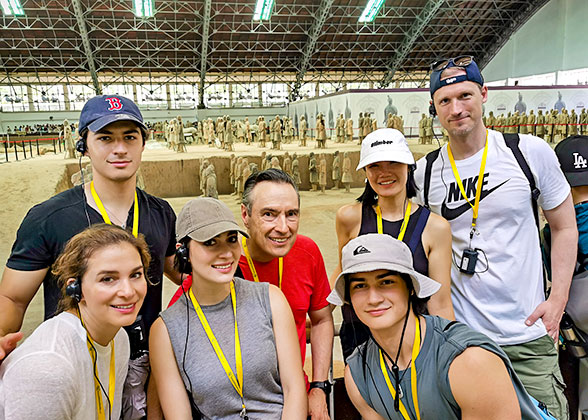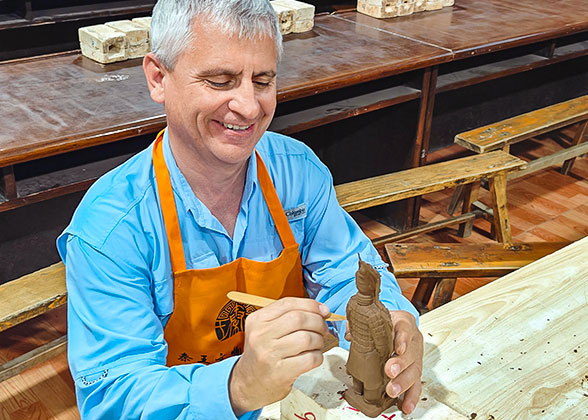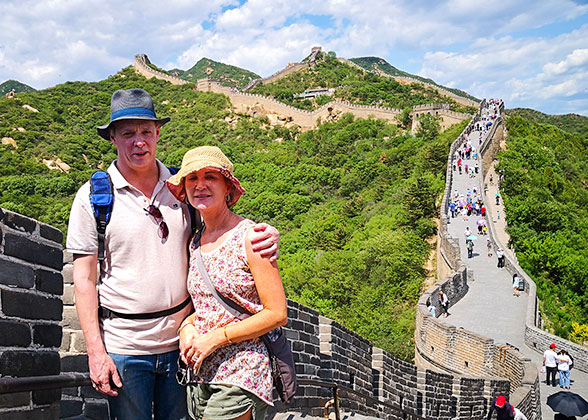By now, approximately 8,000 terracotta warriors have been unearthed in the burial pits of Emperor Qin Shi Huang's Mausoleum. Based on their postures, dressings, and positions in the army, these discovered terracotta warriors are divided into many different types by archaeologists, such as infantry warriors, cavalry warriors, chariot warriors, civil official figures, and acrobatics figures. Besides, the unearthed terracotta horses are mainly categorized into saddle horses and chariot horses according to their different applications.
The infantry warriors form the largest group within the
Terracotta Army, with approximately 7,000 unearthed figures. They are mainly divided into military officers and soldiers.
Military officers include generals, middle-ranking officers, and lower-ranking officers. The generals wear pheasant-feather crowns and color-painted fish-scale armor, with hands clasped in front. Their armor is decorated with intricate patterns and ribbons. Mid-ranking officers wear double-plate long caps and chest or fish-scale armor, often posing with swords. Some stand beside generals as assistants, while others lead soldier formations. The lower-ranking officers wear single-plate long caps and hold weapons. Some are light infantry without armor, while others are heavy infantry with armor.
Soldiers, with an average height of 1.8 meters (5.9 feet), serve as the main combat force. They are divided into two types: robed warriors, agile and mostly deployed at the front, and armored warriors, located within the formation. Both types hold real weapons. Among the infantry warriors are also the famous kneeling and standing archers.
Currently, visitors can see numerous infantry figures in
Pit 1, while some officer figures are displayed in glass cabinets in
Pit 2 and the exhibition hall of cultural relics next to Pit 2.
Current excavations have revealed 160 kneeling archers in the northeastern military formation in Pit 2. The kneeling archers are among the most exquisite figures in the Terracotta Army. They wear long robes with armor and square-toed shoes. Their hair is tied in a topknot on the right side, and they kneel on the right knee with the left leg bent. The right hand is half-clenched as if holding a trigger, while the left hand rests on the left leg, ready to grip a bow. The best-preserved kneeling archers are found in Pit 2, where they attract numerous visitors.
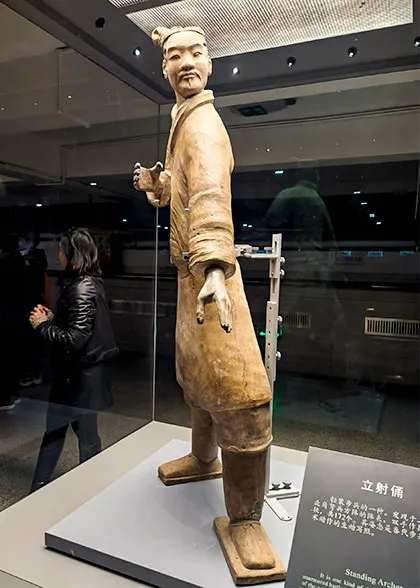 |
| Standing Archer |
Archaeologists have excavated 60 standing archers in Pit 2. They depict light infantry in a shooting posture. These life-sized figures, about 1.8 meters (5.9 feet) tall, stand with feet forming the shape of the Chinese character "丁“, wearing knee-length robes and round topknots. Their left arms extend slightly to the side, while the right arms bend across the chest, as if drawing a bow, vividly depicting the real scene of long-range shooting during the ancient war. Together with the kneeling archers, they form a crossbowman formation. Today, visitors can see them in the glass display cases in Pit 2.
Up to now, a total of 116 cavalry warrior figures have been unearthed from the Mausoleum of the
Emperor Qin Shi Huang, China's first emperor. As agile mobile units, cavalry warriors acted as rapid-response forces in military formations. The life-sized figures are generally 1.8 - 1.9 meters (5.9 - 6.2 feet) tall, standing beside their horses. They wear the typical dress of northern nomadic peoples: tight-sleeved coats, long pants, short boots, and round hats. Their hair is tied in a flat bun under a leather cap, and they wear knee-length robes with waist-length armor but no shoulder protection. They pose with one hand holding a weapon and the other leading a horse. At present, these figures are mainly located in Pit 2, where visitors can view them. Besides, the exhibition hall of cultural relics also displays some cavalry warriors for visitors to have an up-close view.
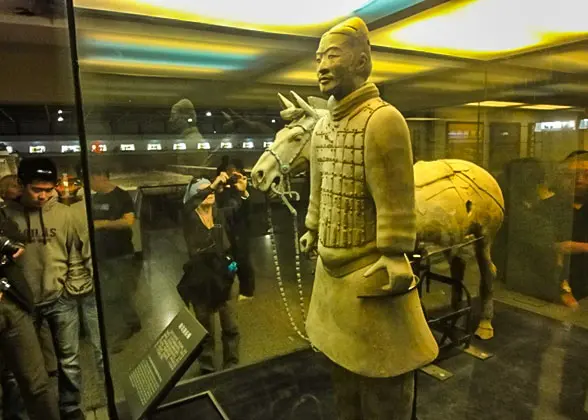 | | Cavalry Warrior | | 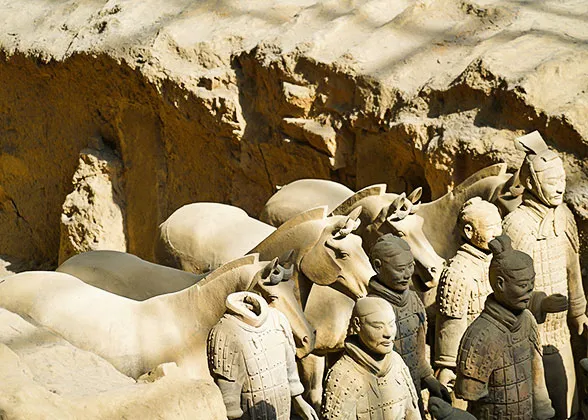 | | Cavalry Warriors with Their Horses | |
It is deduced that about 140 chariots have been discovered inside the Qin Shi Huang Mausoleum, accompanied by different numbers of chariot warriors. Chariot Warriors are responsible for driving and guarding war chariots, primarily deployed in the chariot formation of Pit 2. They include the charioteer standing at the center, the left chariot warrior, and the right chariot warrior.
The charioteer wears a long cap and heavy armor, stretching his arms as if holding the reins. The left and right archers wear different caps and armor based on their roles. Both of them wear long robes, armor, leg guards, and headbands. The left chariot warrior holds a weapon while pressing the chariot, and the right holds a long weapon with the other hand, also stabilizing the chariot. Currently, visitors can see them in Pit 2 and the cultural relics exhibition hall.
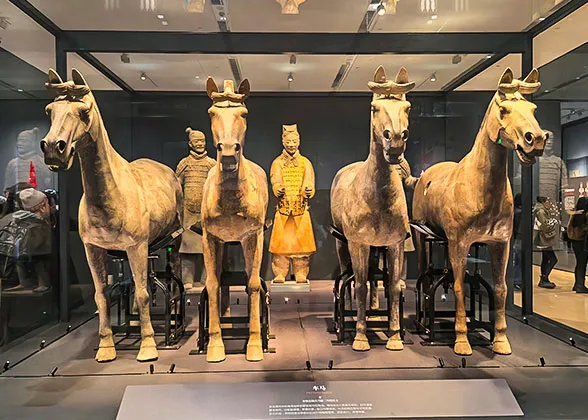 | | Terracotta Horses and Chariot Warriors | | 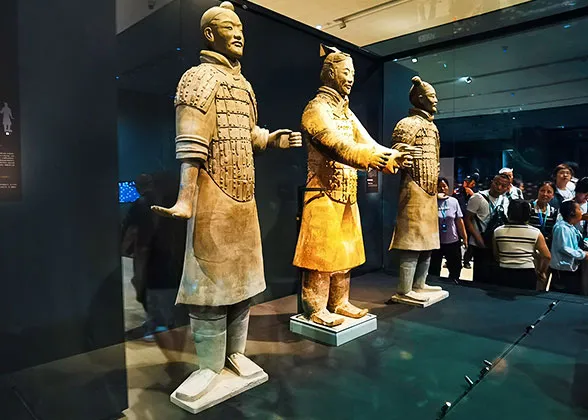 | | Lifesize Chariots Warriors | |
Currently, a total of twelve civil official figures have been unearthed from Pit K0006. These figures represent civil advisors who provided counsel and assisted in administrative affairs for Emperor Qin Shi Huang. Among them, four are depicted as charioteers, while the remaining eight are sleeve-clasping figures.
The sleeve-clasping figures are characterized by their distinctive double-plate long caps and a knife and whetstone suspended from the right waist. An oval hole under the left armpit suggests they may have once held bamboo slips for recording information. Dressed in long pants and square-toed shoes, they stand solemnly with hands clasped inside their sleeves. While the charioteers wear long caps and armor, captured in dynamic poses leaning forward as if holding reins. Now, these figures are displayed both in Pit K0006 and the museum's exhibition hall.
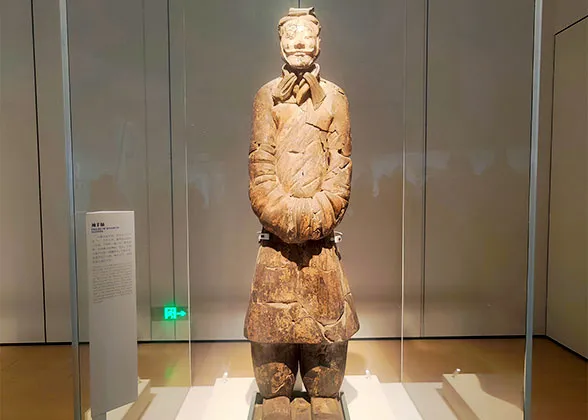 | | Civil Official Figure | | 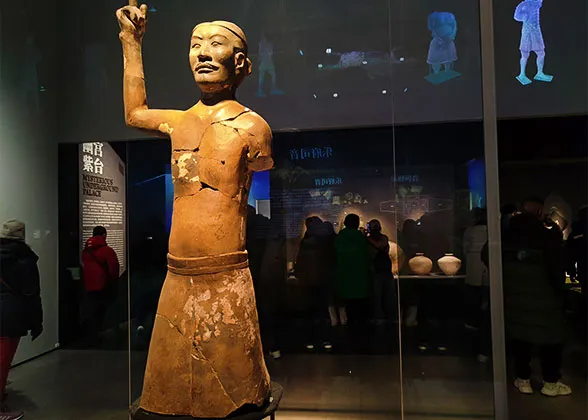 | | Lifelike Acrobatics Figure | |
Acrobatics figures, resembling modern acrobatic performers, provided entertainment in the imperial court. Up to now, eleven have been unearthed from Pit K9901, and visitors can view them at this pit and the museum's cultural relics exhibition hall.
Most of them are bare-chested with colorful short skirts and pink-painted skin. It's worth noting that their poses are all different: standing, lifting, or kneeling, vividly recreating ancient acrobatic acts like tripod lifting and other performances and reflecting the vibrant entertainment culture of the Qin Dynasty (221-207 BC).
More than 600 terracotta horses have been excavated, each crafted to mirror the real war horses of the Qin Dynasty in both size and appearance. These terracotta horses fall into two main categories: saddle horses for riding and chariot horses for pulling chariots.
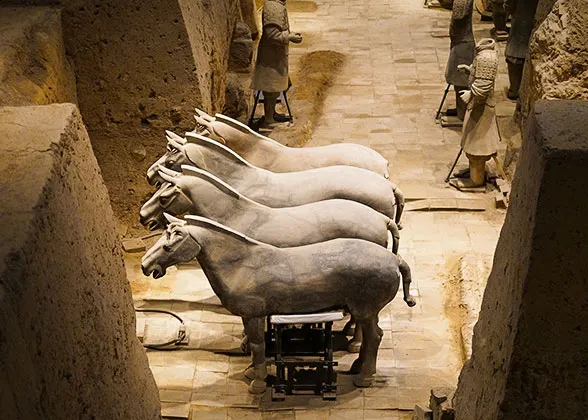 | | Terracotta Horses in Pit 3 | | 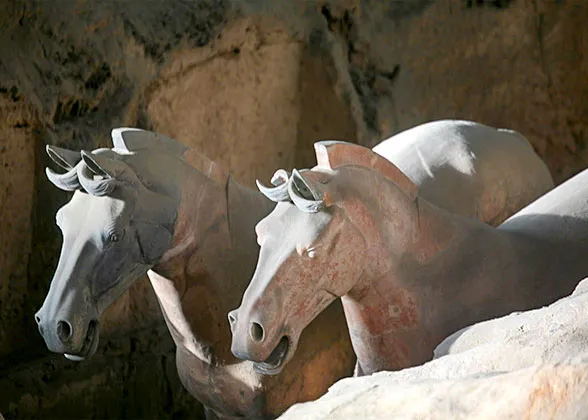 | | Vivid Neighing Terracotta Horses in Pit 1 | |
The horses exhibit strong, muscular builds, broad chests, solid backs, rounded rumps, and powerful legs, all capturing the strength and vitality of Qin war horses. They stand approximately 1.7 meters (5.6 feet) tall, measure about 2 meters (6.6 feet) in length, and weigh roughly 200 kilograms (440 pounds). With well-proportioned bodies, alert eyes, and distinctively squared heads, the horses convey a demeanor that is both calm and commanding. Today, visitors can admire these remarkable figures in most of the excavation pits at the Mausoleum of Qin Shi Huang.
 Read more:
Read more:
- Last updated on Sep. 12, 2025 by Doris Xue -
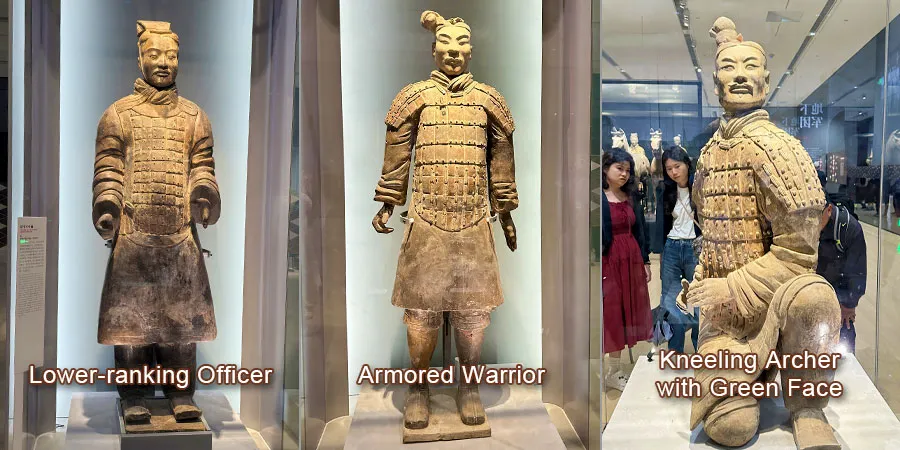

![]() Read more:
Read more:







